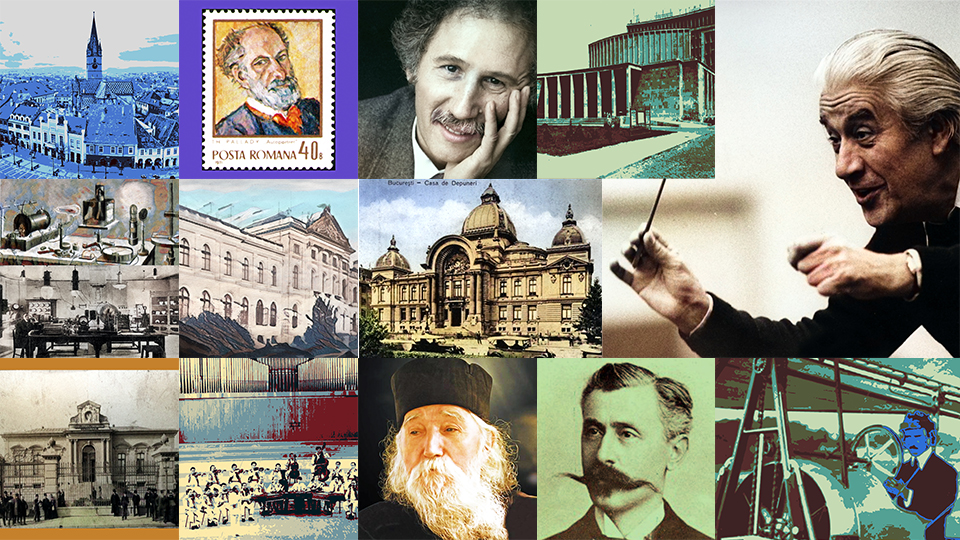Prince Nicholas’ activity in exile
Historian Diana Mandache publishes new book on the life and work of Prince Nicholas, brother of King Carol II.

Christine Leșcu, 05.05.2024, 14:00
Born in August 1903, prince Nicholas was the only brother of King Carol II to make it into adulthood, with the king’s younger brother Mircea dying when he was a child. Brought up by his mother Queen Marie in an unrestricted manner, Nicholas was an energetic child and later as a teenager was interested in sports and car racing. He went to school at Eton and was educated in a British environment. He is, however, still somewhat of a mystery for the public, not least because he spent most of his life in exile. He was a regent between 1927 and 1930, as King Michael was still a minor, and until the return to the throne of Carol II.
Prince Nicholas went into exile because he entered into a morganatic marriage to Ioana Doletti, which the Royal House did not accept. Although his brother Carol had a similar marriage, this did not prevent Carol from exiling his brother when he took back the throne in 1930. Nicholas’ exile began in the inter-war period and continued after the installation of communism after the war. It was this period that Diana Mandache covered in her recent book entitled Principele Nicolae. Exil și rivalități (“Prince Nicholas. Exile and rivalries”). The author conducted research both in the national archives and abroad. Here’s Diana Mandache speaking about the personality of prince Nicholas and his influence in the Romanian diaspora:
“Nicholas was a firm man. He was temperamental, but also had the British manners owing to having studied and lived in Great Britain, after WWI. He also had as tutor the same man who was the tutor of the children of George V, Queen Marie’s cousin. So he had mentors who shaped his character and guided him in key moments. The historian Nicolae Iorga praised Nicholas for accepting the regency and thus lending a certain stability to Romanian political life. King Michael was a minor at the time, and the regency was ensured by three people: patriarch Miron Cristea, Gheorghe Buzdugan, the president of the High Court of Cassation and Justice in 1927 and Nicholas, at the request of Queen Marie. So he was morally ready for the task, but it was difficult to give up his personal life at that young age.”
When he was definitively exiled in 1937, Nicholas embarked on a diplomatic activity, first in Venice, where he lived initially, then in Switzerland, in Lausanne. Diana Mandache explains:
“Nicholas met in the 1940s with Romanian diplomats to discuss important matters, apart from the political and military problems of WWII and the need to join the war on the side of the allies, which meant a change of foreign policy. He wanted to create a committee of free Romanians, which wasn’t possible, Switzerland being a neutral state that did not allow for political activities. But he did have talks with foreign diplomats from the allied states, and an important figure was the United States ambassador, Leland Harrison, who had been familiar with Nicholas’ case since 1937, when he was accredited to Bucharest. He had frequent meetings with Harrison, as well as with Great Britain’s minister in Bern. Nicholas wanted to revise or to draw up a different Constitution and to this end, he hired a Swiss legal expert, which the latter mentioned to the authorities in Bern, because he was obliged to disclose any political interests or positions. Prince Nicholas was warned by the Swiss authorities, verbally, through an intermediary, very diplomatically, to put an end to these political meetings, which sometimes took place during private dinners. Nicholas was naturally allowed to express his views, but nothing more, as Switzerland was a neutral state and didn’t take sides.”
After Romania became a communist country, prince Nicholas intensified his work in exile, with a focus on culture and trying to unify the Romanian diaspora, which was very divided. Diana Mandache tells us more:
“After 1947, prince Nicholas shifts his attention to other states, like France, which had a strong Romanian community owing to the installation of the communist regime and the abdication of the king, as well as Spain, which mainly attracted members of the Iron Guard, and also Italy. Prince Nicholas played an important role in this period. He gave statements to Radio Madrid and Radio Rome on Monarchy Day, on 10th May, or on 24th January, and he organised Romanian festivals. He tried to unify the diaspora in these countries, visiting Romanian associations and organisations and the Romanian communities in Italy, Spain and France. He focused on these three countries. He gave interviews to the Italian and Spanish press, gave statements on the situation of the Romanians in Romania, and took a stand, for example by taking advice in connection to the attack on the legation of the People’s Republic of Romania in Bern by the Oliviu Beldeanu group. […] Prince Nicholas was also interested in cultural matters and he saw culture as a means of propaganda. During the Cold War, the Romanian festivals he organised in West Germany, his support for the Romanian Library in Freiburg, the establishment, after his wife’s death, of the Princess Ioana Cultural Foundation and the organisation of a Romanian festival in Madrid brought together not only his own supporters, but also Romanians living in exile who did not support a particular political group or orientation. These activities were a success in the sense that they were attended by great Romanian cultural figures who gave talks on Romania. So, for prince Nicholas Romania was first and foremost an ideal.”
Prince Nicholas died in 1978 in Madrid and was first buried in Lausanne. This year, however, his remains and those of his wife Ioana Doletti were brought to Curtea de Argeș and reburied in the royal necropolis there.






























